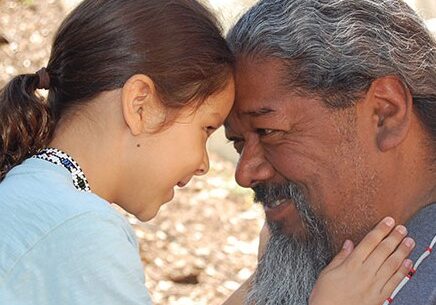Children do what we do, not what we say. As we manage – or don’t manage – our own emotions and behaviors, we usher our children into the same coping mechanisms. Our level of emotional intelligence (EQ), our ability to manage emotions and read the emotional cues of others, plays a large role in our children’s emotional and social successes.
Daniel Goleman, Ph.D., an emotional intelligence innovator, writes, “There are hundreds of studies showing that how parents treat their children – whether with harsh discipline or empathetic understanding, with indifference or warmth, and so on – has deep and lasting consequences for the child’s emotional life. Only recently, there has been hard data showing that having emotionally intelligent parents is of enormous benefit to a child.”
If we want to increase our children’s EQ, we must raise our own. Start building EQ with the following proven methods of awareness, regulation and preparation:
 Use emotional moments as opportunities for teaching
Use emotional moments as opportunities for teaching
While a full range of emotion is normal, emotions like joy and love tend to be socially acceptable. Difficult emotions like anger or fear tend to be directly or indirectly taught as being unacceptable. These lessons start young and carry a lasting impression. John Gottman, author of Raising an Emotionally Intelligent Child, writes about parents who have emotional awareness, “They don’t object to their children’s displays of anger, sadness or fear. Nor do they ignore them. Instead, they accept negative emotions as a fact of life and they use emotional moments as opportunities for teaching their kids important life lessons and building closer relationships with them.”
Awareness begins by allowing the full spectrum of emotions to exist without labels of good and bad. Rod Koehler, resource specialist teacher at Golden Eagle Charter School, echoes the need to honor emotions. He says, “Too often, as adults or teachers, we allow academic development to have such exclusive priority. Negative emotions that often surface are treated like bumps in the road to be avoided or smoothed over quickly.”
Parent Tip: Acknowledge your varying emotional states. For example, “I’m feeling happy that you cleaned the house. I feel less stressed about our schedule.” Or, “I feel angry about the words you used. I might be quiet for a bit so I can think.” In these examples, note the “I” language being used. The parent did not say, “You made me angry.”
Koehler says, “The I-message allows adults to acknowledge and respond to the child’s behavior while verbalizing the particular emotion they are feeling, and at the same time demonstrating an appropriate response to that emotion. Ideally, you could also allow for further discussion on the emotion that the child is feeling and its cause. Create an environment where the child will brainstorm possible solutions to the situation that could be triggering their negative emotions.” This process is true for all kids (and adults, too) but holds even more value for those with special needs.
Kid Tips: Help kids name their emotions and feelings. This allows children to become comfortable with the variety of human emotions. We want our kids to be happy, but it’s important to remember that it is okay for them to be angry or sad. Ask kids to name their emotion and talk about where they feel it in their body. Other ideas include asking kids to draw or journal their emotions and feelings. Most kids don’t have any trouble showing emotions, but they may need help naming them.
Reflective listening is a tool used by parents and professionals to assist kids with connecting emotions with feelings. After witnessing your child’s frustration, reflect what you saw and heard – being sure to connect emotions to the situation. For example, “You’re stomping your foot and yelling. You are angry. You’re saying you wanted to go to the front of the line but we have to wait way back here until it’s our turn. You’re angry.” Mt. Shasta-based marriage and family therapist Robin See-Swenson says, “The practice of reflective listening, in conjunction with sharing emotions, is key to creating a safe environment to openly share. Repeating back to the child what he or she says is validating. When an adult repeats what they heard, an opportunity is created for the child to further elaborate or clarify if the message heard was incorrect.” See-Swenson notes that it’s important not to try to fix or react to the emotions in the moment. Later, parents can work with the child to process and heal. She says, “Allowing children, and adults to have their feelings is important, and being heard is powerful.”
Create space between emotion and action
We can all relate to doing and saying things we wished we hadn’t while under the influence of intense emotions. When we’re angry, we can’t think. Our bodies are flooded with stress hormones and brain activity shifts to fight, flight or freeze. Although acting from this emotional state may eliminate the immediate threat, in the long run it usually leads to larger issues and damaged relationships. Regulation is the intentional space we create between our emotion and our action.
Parent Tip: Create space between emotion and action. Instead of starting a conversation while angry, say, “I am angry about this, and I need to calm down before we talk.” Take at least 20 minutes – the time it takes to decrease stress hormones. Don’t use this “space” to recirculate the story (what happened and how angry you feel). Doing so builds negative emotional momentum. Instead, do things to move from survival to thinking mode – deep breathing, walking, journaling, singing, etc.
Kid Tip: Compassionately guide kids through the process of problem solving, decision making and planning. Other regulation tools for kids are: deep breathing, yoga and mindfulness meditation. Research suggests they have positive outcomes like more kindness, more self-control, improved focus and less depression.
Wellness and yoga teacher, Jenny Johnston at Thrive Homeschool Program in Chico, says that first and foremost children must be allowed to feel their feelings. “Ask children to take three deep breaths,” Johnston says, “then tell them to send each breath to the body part where they feel the emotion. This applies to the whole family. It’s important for parents to be role models. When mom says, ‘I’m really mad and I’m going to sit on the couch and take three deep breaths,’ kids really get the message; we don’t have to stuff our emotions.”
Identify triggers that bring about emotional states
Identify personal and social triggers that bring about emotional states – preschool drop-off, pre-game jitters, holidays, etc. Preparing for elevated emotions allows us to stay in a state of choice, instead of being reactionary.
Parent Tip: Create daily self-care and support measures. Taking care of ourselves and asking for help are good investments in a family’s ability to thrive.
- Where can daily five-minute breathing breaks be created?
- How can partners work together on an upcoming issue?
- What support is needed to get through a difficult time?
Butte Parent Café, a program of Valley Oak Children’s Service in Chico, is a great resource for families working towards increased EQ. The program provides guided conversations allowing families to share resources and questions. Justin Margolis, program coordinator, says, “We believe in strengthening and uplifting families to be the best they can be. We are providing a place for self-growth, community support and better awareness. There is no putting down or shame. All parents have their own history and circumstances that brought them to where they are now. We honor all parents and thank them for coming.” Butte Parent Café is grant-funded through First 5 and the Child Abuse Prevention Council, offering free dinners and childcare to participants.
Kid Tip: Work through problem-solving scenarios with kids to prepare for upcoming emotional situations. This not only helps kids build brain pathways to appropriate responses, but they can also begin to understand social and emotional cues from others. Asking the following questions in advance can be helpful:
- How do you know if someone is mad? Scared? Happy?
- How do you feel about your game on Saturday?
- What ideas do you have about staying calm for the test?
Sharyn Fields from the Office of Suspension & Expulsion Review at Chico Unified School District encourages anyone working with kids, especially kids with traumatic experiences, to use a bit of humor. She says, “There’s an art to not taking it personally when someone else is struggling. If you can keep it light, keep a sense of humor and remove anything personal from the interaction, it really helps children (or anyone) to regulate themselves more easily. Humor just might be the single-most important factor in determining their resilience in the face of overwhelming odds.”
Admittedly, the work is not easy or fast. Self-compassion and consistency is key. Research demonstrates that as parents raise their own EQ and practice emotional guidance with their children, kids show increased physical health, have higher academic performance, report better relationships, demonstrate fewer behavior issues, are less prone to violence and show increased resiliency rates. Family members undergo powerful transformations together. As awareness is built, space is created to make preparations for the inevitable ups and downs of family life.
Posted in: Youth & Teen
Comment Policy: All viewpoints are welcome, but comments should remain relevant. Personal attacks, profanity, and aggressive behavior are not allowed. No spam, advertising, or promoting of products/services. Please, only use your real name and limit the amount of links submitted in your comment.
You Might Also Like...

Money Wisdom: Growing Savvy Spenders
We have all heard the old adage, “money doesn’t grow on trees.” While most adults can attest to the truth in that saying, we can also take a lesson from […]

Showing Up for Children Makes a Lasting Impression On Their Brains
Showing up in our lives and in the lives of our children is the juicy nectar of living fully. There is big meaning in that sentence. Take a moment to […]

Watch This — Do That
Watching kid’s movies can be fun no matter what age you are, and family movie night can also be an educational experience, as many of these movies give us new […]

Important Things to Teach Your Child About Money
“Money doesn’t grow on trees.” “Another day, another dollar.” “You get what you pay for.” “Money makes the world go ‘round.” These common sayings can be confusing for children. It’s […]


 Use emotional moments as opportunities for teaching
Use emotional moments as opportunities for teaching
